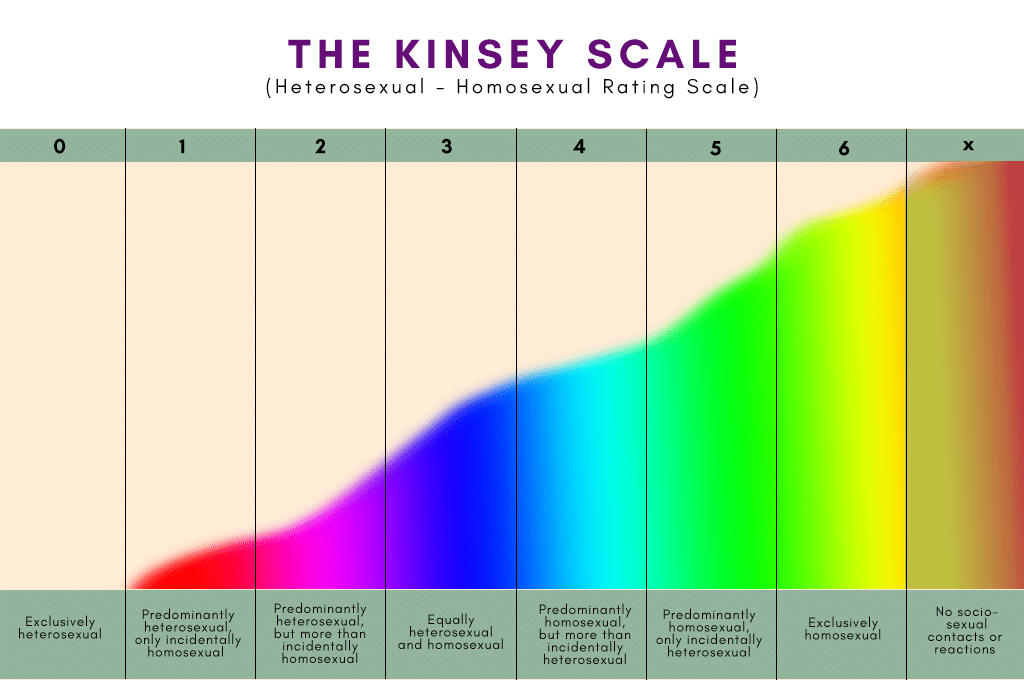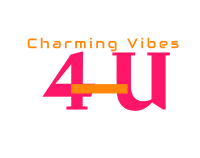In this Sexuality Spectrum article, we will explain what this expression means, why more and more people are using it, and how it relates to your sexuality. So, if you want to find out more, please proceed with reading.

©Ben Wiseman
Why study your Sexuality Spectrum?
For example, a spectrum is an endless series or range – it can define the spread of colors in a rainbow. We often discuss sexuality on a spectrum, meaning different preferences, labels, and sexual attraction. That’s why the sexuality spectrum refers to the idea that people’s sexual identities and orientations are complex. It also allows for greater fluidity of sexual identity and expression.
What is sexuality?
Sexuality is a complex matter with multiple components, such as sexual and romantic attraction, preferred partners, and behaviors. Sexual attraction refers to an individual’s attraction to having sex or forming a sexual relationship with others. On the contrary, romantic attraction describes how someone expresses love. There are many sexual orientations, and it’s normal for people to identify with more than one or for their exposure to change over time. Ultimately, it’s up to each person to define their sexuality and choose the label that best represents who they are.
What Is the Sexuality Spectrum?
The sexuality spectrum directs to the idea that people’s sexual identities and orientations are complex and resist easy classification. Instead of offering people a choice between either homosexual or heterosexual, it provides a manner of talking about sexuality in terms of multiple possibilities.
The sexuality spectrum also allows for greater fluidity of sexual identity and expression. You might change from one position to another or move about the spectrum. Large-scale studies have supported both the idea that broad terms can be misleading for some people and that people often have sexual orientation ranges rather than fixed orientations.
To some extent, the shift from categories of sexuality to a sexuality spectrum is a generational shift. Millennials increasingly prefer to identify themselves along a spectrum. However, the spectrum is neither a specifically millennial phenomenon nor a concept all millennials embrace.
Sexual Orientation Spectrums
The spectrum itself isn’t a singular entity. Rather than one line with complete homosexuality at one end and exclusive heterosexuality at the other, there are more than 200 scales people have developed to define sexuality.
The three most commonly used scales are the following:

©choosingtherapy.com
The Kinsey Scale
The Kinsey Scale is one of the best-known and most commonly used scales. If you wonder how you might fall on the Kinsey Scale, there is no official Kinsey “test.” The original Kinsey research team assigned a number based on a person’s sexual history.
The Kinsey Scale ranges from 0-6 (with an additional category of X) as follows:2
0 | Exclusively heterosexual
1 | Predominantly heterosexual, only incidentally homosexual
2 | Predominantly heterosexual, but more than incidentally homosexual
3 | Equally heterosexual and homosexual
4 | Predominantly homosexual, but more than incidentally heterosexual
5 | Mostly homosexual, only incidentally heterosexual
6 | Exclusively homosexual
X | No socio-sexual contacts or reactions
It is imperative to recognize that while the Kinsey Scale was a pioneering instrument in comprehending sexual orientation, it fails to encompass all conceivable identities. The Klein Sexual Orientation Grid and the Storms Scale have since been developed to delve deeper into the intricate and multifaceted nature of human sexuality. By utilizing these tools, we can better understand the diverse experiences of individuals in the LGBTQ+ community.
The Klein Sexual Orientation Grid
The Klein Sexual Orientation Grid (or KSOG) is a system for describing a person’s sexual preferences in a more detailed and informative way than previous methods. Furthermore, It was introduced by Dr. Fritz Klein (1932-2006) in his book The Bisexual Option.
The Klein Sexual Orientation Grid is shown in the table below. For each person, it sets out the seven component variables of sexual orientation, listed as A through G, down the left side. The three columns indicate three points at which sexual orientation is assessed: the person’s past, present, and ideal. The person receives a rating from 1 to 7 for each of the 21 resulting combinations, one for each empty box in the chart below. The meanings of the ratings are indicated just below the grid itself.
Storms Sexuality Axis
The Storms Sexuality Axis is a sexuality scale developed by Michael Storms, a psychologist at the University of Kansas. Storms had been studying sexuality and erotic fantasies, and he felt as if there were conceptual problems with the Kinsey Scale. He found that bisexuals engaged in as much heterosexual fantasizing as heterosexuals and as much homosexual fantasizing as their lesbian and gay counterparts. He confirmed from this that bisexuality seemed to contain complete heterosexuality and total homosexuality in a way not indicated by the Kinsey Scale. Furthermore, Storms also wanted to distinguish between bisexuality and asexuality. That’s why, in 1980, he suggested a new sexuality scale using an x-y axis. However, The Sexuality Axis has been criticized for implying that asexuality is a ‘negative’ option and entirely separate from other sexualities.
The Asexuality Spectrum
It’s essential to recognize the vast diversity within the ace community regarding interest in sexual behaviors. It’s crucial to distinguish between wanting and being willing to engage in sexual behaviors across the ace spectrum. By examining the asexual sexuality spectrum, we can see that many potential identities can exist along that continuum. Familiarizing yourself with these labels can help you better understand who you are and find your place in the LGBTQ+ community. Remember, many resources are available to help you navigate your journey of self-discovery. Don’t hesitate to seek support if you need it.
An individual who identifies as asexual (“ace”) is a person who does not desire a sexual relationship or has minimal sexual desires. Asexuality is the lack of sexual attraction to others or low or absent interest in or desire for sexual activity. Like all elements of sexuality, asexuality may also be categorized more specifically to include a broad spectrum of asexual sub-identities.
Defining the Asexuality Spectrum
Not everyone on the asexuality spectrum will have the same feelings or experiences. Just because an ace person isn’t sexually attracted to a specific gender doesn’t mean they don’t have the exact needs or desires as everyone else. They still might seek out emotional ties or a personal, romantic relationship. They may want to fall in love, feel aroused at times, have self-pleasure and have orgasms, have sex, and even get married and have families.
Asexuality can often be mistaken for sexual interest/arousal disorder. However, the difference between the two is that asexuality is the absence of sexual attraction, and sexual interest/arousal disorder is the absence of sexual desire.
Asexuality is a spectrum, and there are several different types of asexual people. Ace-spectrum people may be any of the following.
Sex-negative
For a sex-negative asexual person, sex seems offensive or even repulsive. While sex-repulsed asexuals might not believe sexual activity is morally wrong, they do find it to be highly unpleasant.
Sex-neutral
A sex-neutral asexual person can feel indifferent to sexual activity. They don’t have any substantial positive or negative feelings about sex and may not think about it much at all.
Sex-positive
While sex-positive aces don’t experience sexual attraction, the feelings they have about sex and sexual things are generally favorable. They may see sex as a normal, healthy part of life. Some sex-positive asexuals may even choose to have a sexual relationship.
Types of asexual identities
Asexual:
Asexuality includes a lack of sexual attraction to others or a low interest in sexual activity. A person who identifies as asexual does not have sexual feelings or a desire to engage in sex with another person. Sometimes, individuals who are ace desire a romantic connection with other people.
Aromantic:
A person who identifies as aromantic is not interested in romantic relationships with other people. Sometimes, aromantic individuals are interested in sexual relationships.
Graysexual/Grayromantic:
Grayromantic is an aro-spec identity that is not purely aromantic. Graysexual refers to limited sexual attraction. Gray-romantic/graysexual lies between firmly asexual and allosexual. The term ‘gray’ stems from a “gray area” in sexuality. Grayromantic is a romantic identity on the aromantic spectrum.
Demisexual/Demiromantic:
Demisexuality is a sexual orientation in which a person feels sexually attracted to someone only after they’ve developed a close emotional bond with them. Forming a bond doesn’t guarantee a person will feel a sexual attraction, but the bond is needed before sexual activity is even possible.
Reciprosexual:
Someone who does not experience sexual attraction until they know that the other person is sexually attracted to them first. The prefix recipro- comes from the word reciprocate or reciprocal.
Akiosexual:
A person who identifies as asexual (with sexual) experiences sexual attraction, but their feelings fade if reciprocated. Akiosexual can also be someone who doesn’t care or want their feelings returned. A person who is akioromantic would have romantic attraction until those feelings are reciprocated.
Aceflux/Aroflux
An aroaceflux individual may feel very strongly asexual and aromantic one day and less asexual and aromantic another day. Aroaceflux is sexuality where someone is both aceflux and aroflux. Their sexual and romantic orientation fluctuates but generally stays on the asexual and aromantic spectrums. These fluctuations may occur at the same time, or they may be independent. The change in romantic and sexual orientation may or may not happen simultaneously or correlate. Aroaceflux can be an orientation on its own or combined with other orientations.
Cupiosexual / Kalossexual
Cupiosexual is also (previously) known as kalossexual. It is a micro-label on the asexual spectrum for those who do not experience sexual attraction yet desire a sexual relationship. Cupiosexuals are commonly sex-favorable.
An example of this micro-label could be a demisexual who may date someone on the assumption of experiencing sexual attraction later on when they establish a strong emotional bond. Another example could be a fraysexual who continues to date someone after losing the initial sexual attraction.
Fictosexual
A fictosexual falls under the asexual umbrella as they do not experience sexual attraction to (real-life) people. Fictosexual is a term used for people who share sexual attraction exclusively towards fictional characters. Alternatively, whose sexuality is influenced by fictional characters.
Myrsexual
Someone who identifies as my sexual is on the asexual spectrum but might feel confused as to where exactly they can experience multiple asexual identities at once. They can also rapidly fluctuate.
For example, someone who considers themself to be both demisexual as well as graysexual. Or fictosexual as well as graysexual. It can often be confusing for people, which is why myrsexual can be a more comfortable label to identify with.
Quoisexual
Quoisexual is also an asexual identity on the asexual spectrum and describes people who don’t relate to and understand experiences or concepts of sexual attraction and orientation. Differently put, a bisexual is someone unsure of what sexual attraction is and is uncertain if they experience sexual attraction.
Other Types of Scales & Sexual Spectrums
You can also measure Human sexuality on other scales. The Sexuality Scale measures three aspects of human sexuality:
- Sexual esteem is positive regard for and confidence to experience one’s sexuality satisfyingly and enjoyably.
- Sexual depression: A primary symptom of depression is the inability to enjoy things you usually want, like sex. People with depression also have decreased energy, feel bad about themselves, and might view their partners through a negative filter, all of which impact their sex drive.
- Sexual preoccupation: It’s an intense focus on sexual fantasies, urges, or behaviors that can’t be controlled. All this causes distress and problems for your health, job, relationships, or other parts of your life.
Another scale that can measure sexuality is kink. Kink describes sexual behaviors and identities encompassing bondage, discipline, domination and submission, sadism, masochism (collectively known as BDSM), and sexual fetishism.8 Even though kinkiness can be very difficult to define, a broader definition would include sex that falls outside of heteronormative sexual behaviors. A kink scale would measure how varied your sexual preferences are. Like all other elements of sexuality, kink and kinky behaviors are based on individual preferences and chosen labels.
Why Are Sexuality Spectrums Required?
The LGBTQ++ spectrum encompasses many identities beyond those discussed here. These identities are essential for individuals to find community and understanding.
Where to Get Support With Sexuality Concerns
If you struggle to identify your emotions, don’t worry; you’re not alone. Many people have difficulty pinpointing their exact feelings, especially concerning heart matters. Fortunately, there are resources available to help you navigate these complex emotions. Consider seeking the support of a trusted friend or family member or even a therapist specializing in LGBTQ+ issues. To help minimize this risk, here is a list of organizations that can recommend services that are inclusive and respectful of LGBTI people.
Final Thoughts
Remember that your sexuality is a deeply personal aspect of yourself, and it’s up to you to define or label it. It’s important to know that sexuality can change throughout your lifetime, and that’s completely normal. There are many different scales and identities on the sexuality spectrum, so taking the time to familiarize yourself with these labels can help you better understand who you are and are attracted to. Don’t be overwhelmed by the terminology – initially, feeling unsure or confused is natural. Expanding your vocabulary to describe your sexuality can be incredibly helpful as you navigate your journey of self-discovery and find your place in the LGBTQ+ community. Remember, you’re not alone; many resources are available to help you.
Photo credits:
Feature photo Credits: Ben Wiseman



